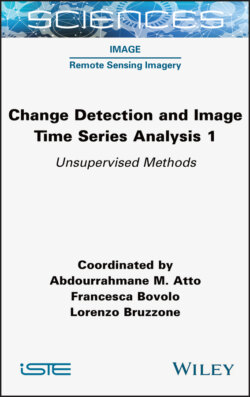Читать книгу Change Detection and Image Time-Series Analysis 1 - Группа авторов - Страница 23
1.3.3.1. Superpixel-level spectral change representation
ОглавлениеThe original SCVs focus on the spectral variation representation from each individual pixel, thus ignoring spatial correlation with neighboring pixels and the local spectral homogeneity associated with real land-cover objects. This may lead to the commission and omission errors, and a decrease in the overall detection accuracy. Superpixel segmentation can capture image redundancy and generate convenient primitives to compute representative features, while reducing the complexity of the subsequent processing and analysis. In this work, we used the simple linear iterative clustering (SLIC) algorithm (Achanta et al. 2012) as the core algorithm for generating superpixel segments. Compared to the other popular segmentation methods, SLIC offers a better performance in boundary adherence and generates superpixels efficiently under the same hardware conditions. Moreover, SLIC is memory efficient, and only requires the storage of the distance from each pixel to its nearest cluster center. Most importantly, it can be smoothly integrated within the proposed method, especially from the pixel to superpixel-level spectral change representation and detection, which drives a proper algorithm utilization.
The general idea of the SLIC algorithm is to find small regional clusters by considering their local homogeneity (Achanta et al. 2012). The key step is to calculate the distance d that implements a measurement from the spectral–spatial point of view. Let dcolor and dxy be the spectral and spatial distances between two given pixels α and β, respectively, defined as:
[1.14]
[1.15]
Here, (L, A, B)T denotes the CIELAB color space values, with L being the color lightness and A and B representing color values along red-green and blue-yellow axes, respectively. (x, y)T denotes the coordinates of a given pixel. A final weighted distance measure dαβ can be defined as:
[1.16]
where s is the width of grids. It controls the size of created superpixels, i.e. the greater the s, the larger the superpixels. A roughly equal-sized grid interval can be defined as where Z is the total number of pixels and N is the desired number of superpixels. In reality, the real number of generated superpixels (defined as N′) might be slightly different from N. The parameter m controls the relative importance between the color similarity and the spatial proximity. The greater the m, the greater the emphasis on spatial proximity and the compactness of a generated superpixel. A regular m value can be defined within the range of [1, 40]. For more details, readers can refer to the paper by Achanta et al. (2012).
In order to enhance the spectral variations due to the limited bands in multispectral images, principal component analysis (PCA) is applied to the original SCVs. This strengthens the change representation and extends the feature space. The first three principal components (i.e. PCs) are used in the SLIC algorithm to generate the segments (i.e. superpixels) with the identified boundaries. Then original SCVs are stacked with the PCs to create an enhanced feature set (denoted as SCVs-PC). Note that normalization is conducted on SCVs-PC bands to make data dynamic range consistent. Finally, a mean operation is applied on each segment in the SCVs-PC bands, where the mean vector is used to replace the original SCVs-PC vectors, in order to achieve the enhanced spectral change representation at the superpixel level. Note that, by doing this, the change information is concentrated with spectral–spatial coherence and the computational cost is largely reduced when compared with the original pixel-wise processing.
